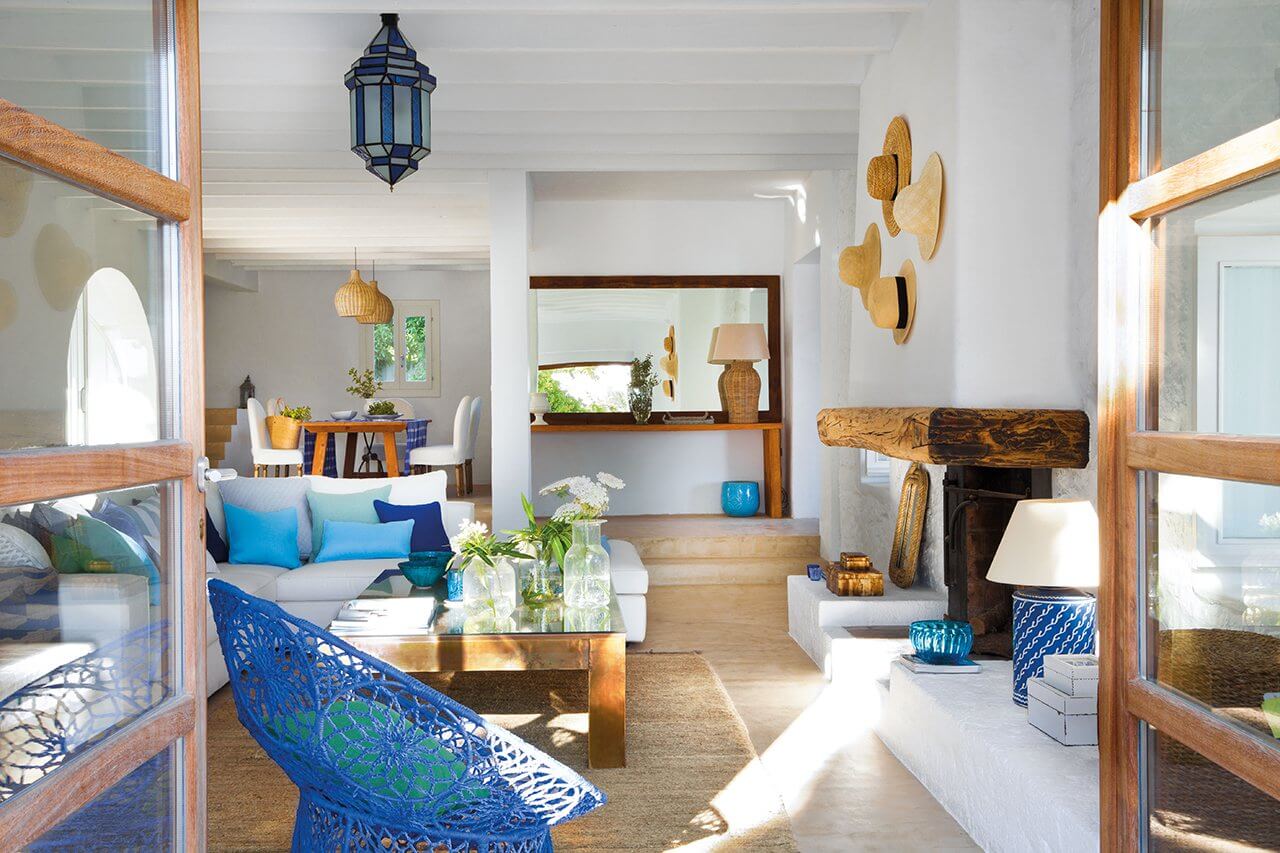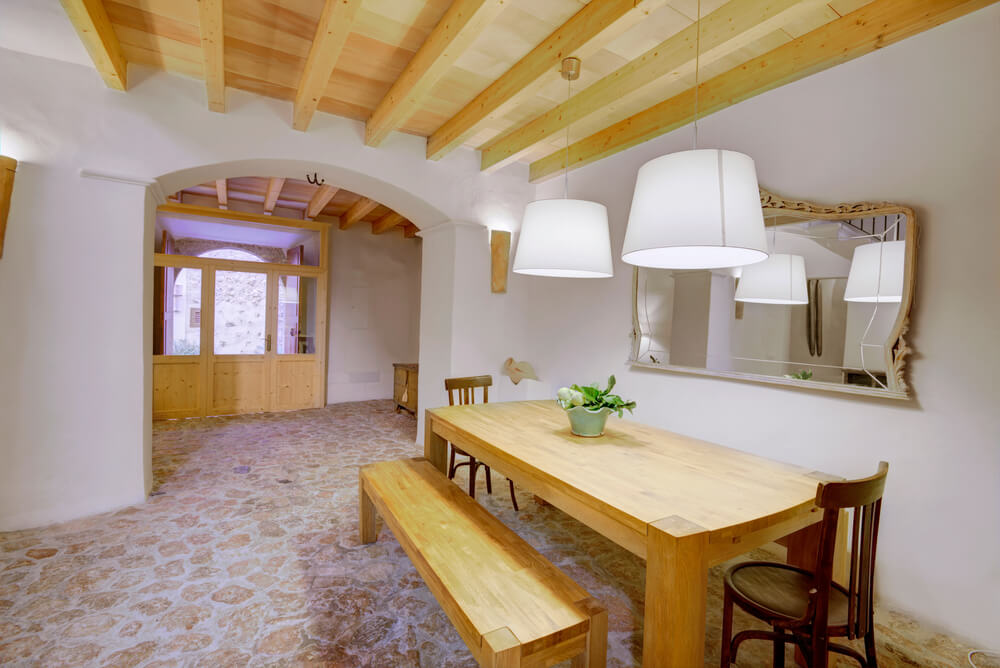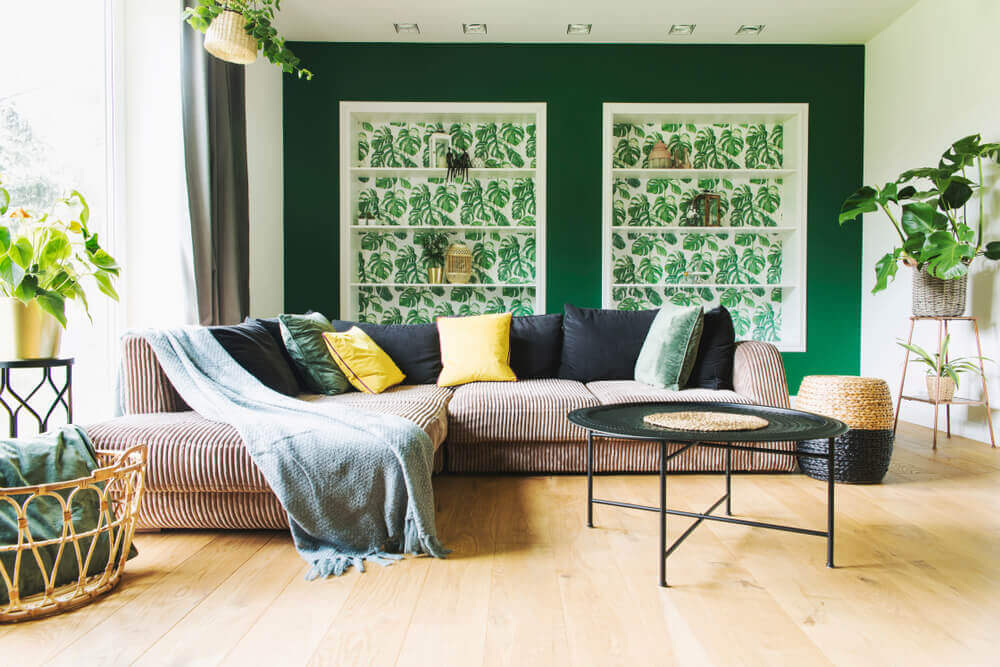What's So Important About Mediterranean Decor?

You’ve probably asked yourself at some point: why is everyone so into Mediterranean decor? It’s actually a great way to create a warm, fresh home decor.
As its name suggests, this decor style is common among houses that line the Mediterranean Sea. These homes might be in Spain, France, Italy, Greece, Morocco or Tunisia.
For centuries, the Mediterranean has been a bridge between cultures, connecting Europe, Asia, and Africa. As a result, the Mediterranean decor combines different characteristics from those places. While each region has its signature details, they all share something in common: the perfect balance between freshness, light, and warmth.
Creating a Mediterranean ambiance via decor is the best way to apply nature to a setting.
Light is a main player

One of the biggest features of Mediterranean decor is abundant light. Mediterranean homes tend to be filled with light. So opening big windows or balcony doors to let the light flood in is very typical.
In order to let the light shine at its brightest, you need to choose materials that don’t hinder it. First off, keep big furniture pieces away from the windows; instead, use low pieces and try to avoid creating unsightly shadows. By positioning your furniture wisely, you can make the most of your natural light.
Choosing the right curtains and arranging them appropriately is another way to fill your home with light. Avoid heavy textiles that keep light from coming through. Light, translucent textiles that let light flood in will work much better.
Colors: white, blue and earthy tones

As for a Mediterranean color scheme, aim for one that links to nature. In other words, your main colors should be connected to nature and craftsmanship.
- White: it goes without saying that white plays an important role in this decor. White walls create a strong sensation of light. In addition, white helps highlight the other materials used in this decor, such as wood or ceramics.
- Sky blue and blue-green: Mediterranean homes pay homage to the sea. Blue is usually the color for textiles, such as curtains, decorative pillows or blankets. But remember that you shouldn’t use just any blue; ultramarine blue evokes colder settings. Keep your blue range from sky blue to blue-green.
- Earthy tones: the Mediterranean style uses objects inspired by nature, making earthy tones especially common. Brown, cream or deep green elements are an absolute must.
Natural materials in Mediterranean decor

As with light, natural materials are another crucial characteristic that sets this decor apart from the rest. Wood is a key element. Most furniture pieces are wood, instead of something more artificial such as plastic. For example, we commonly see wooden blinds.
But wood is especially popular in floors and ceilings, where the wooden beams are left exposed. If you have wooden beams, a decor idea is painting them in maritime colors: sky or ultramarine blue.
Another must-have material for Mediterranean homes is wicker or raffia. They’re popular for chairs and stools but you can also see them used in decor accessories like baskets and light fixtures.
A decor that’s both alternative and rural

Lastly, we can’t forget about earthenware or ceramics. You can use ceramics anywhere in your home. People normally place them on the floor, on top of furniture or hanging off the walls.
Mediterranean homes feature simple, earthy motifs and aren’t excessively decorated. But using more wall decor can create dynamism. Geometric patterns with Arabic influences are very common.
To sum it all up, we love the Mediterranean style for its simplicity and naturalness.
You’ve probably asked yourself at some point: why is everyone so into Mediterranean decor? It’s actually a great way to create a warm, fresh home decor.
As its name suggests, this decor style is common among houses that line the Mediterranean Sea. These homes might be in Spain, France, Italy, Greece, Morocco or Tunisia.
For centuries, the Mediterranean has been a bridge between cultures, connecting Europe, Asia, and Africa. As a result, the Mediterranean decor combines different characteristics from those places. While each region has its signature details, they all share something in common: the perfect balance between freshness, light, and warmth.
Creating a Mediterranean ambiance via decor is the best way to apply nature to a setting.
Light is a main player

One of the biggest features of Mediterranean decor is abundant light. Mediterranean homes tend to be filled with light. So opening big windows or balcony doors to let the light flood in is very typical.
In order to let the light shine at its brightest, you need to choose materials that don’t hinder it. First off, keep big furniture pieces away from the windows; instead, use low pieces and try to avoid creating unsightly shadows. By positioning your furniture wisely, you can make the most of your natural light.
Choosing the right curtains and arranging them appropriately is another way to fill your home with light. Avoid heavy textiles that keep light from coming through. Light, translucent textiles that let light flood in will work much better.
Colors: white, blue and earthy tones

As for a Mediterranean color scheme, aim for one that links to nature. In other words, your main colors should be connected to nature and craftsmanship.
- White: it goes without saying that white plays an important role in this decor. White walls create a strong sensation of light. In addition, white helps highlight the other materials used in this decor, such as wood or ceramics.
- Sky blue and blue-green: Mediterranean homes pay homage to the sea. Blue is usually the color for textiles, such as curtains, decorative pillows or blankets. But remember that you shouldn’t use just any blue; ultramarine blue evokes colder settings. Keep your blue range from sky blue to blue-green.
- Earthy tones: the Mediterranean style uses objects inspired by nature, making earthy tones especially common. Brown, cream or deep green elements are an absolute must.
Natural materials in Mediterranean decor

As with light, natural materials are another crucial characteristic that sets this decor apart from the rest. Wood is a key element. Most furniture pieces are wood, instead of something more artificial such as plastic. For example, we commonly see wooden blinds.
But wood is especially popular in floors and ceilings, where the wooden beams are left exposed. If you have wooden beams, a decor idea is painting them in maritime colors: sky or ultramarine blue.
Another must-have material for Mediterranean homes is wicker or raffia. They’re popular for chairs and stools but you can also see them used in decor accessories like baskets and light fixtures.
A decor that’s both alternative and rural

Lastly, we can’t forget about earthenware or ceramics. You can use ceramics anywhere in your home. People normally place them on the floor, on top of furniture or hanging off the walls.
Mediterranean homes feature simple, earthy motifs and aren’t excessively decorated. But using more wall decor can create dynamism. Geometric patterns with Arabic influences are very common.
To sum it all up, we love the Mediterranean style for its simplicity and naturalness.
All cited sources were thoroughly reviewed by our team to ensure their quality, reliability, currency, and validity. The bibliography of this article was considered reliable and of academic or scientific accuracy.
Pérez-Ordóñez, A.: Arquitectura tardo-andalusí y morisca. Iidentidad Andaluza, Historia, Cultura y Actualidad Andaluza, 2010.







